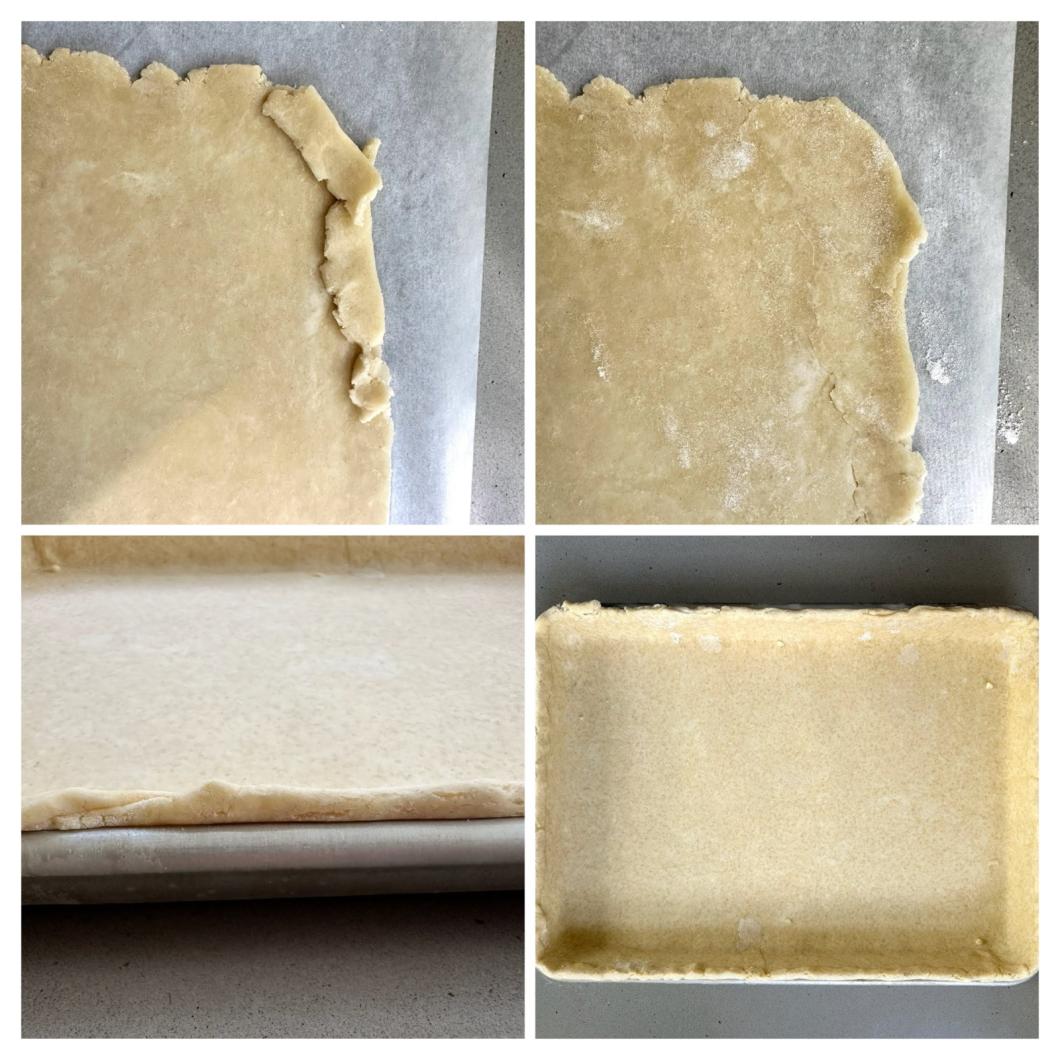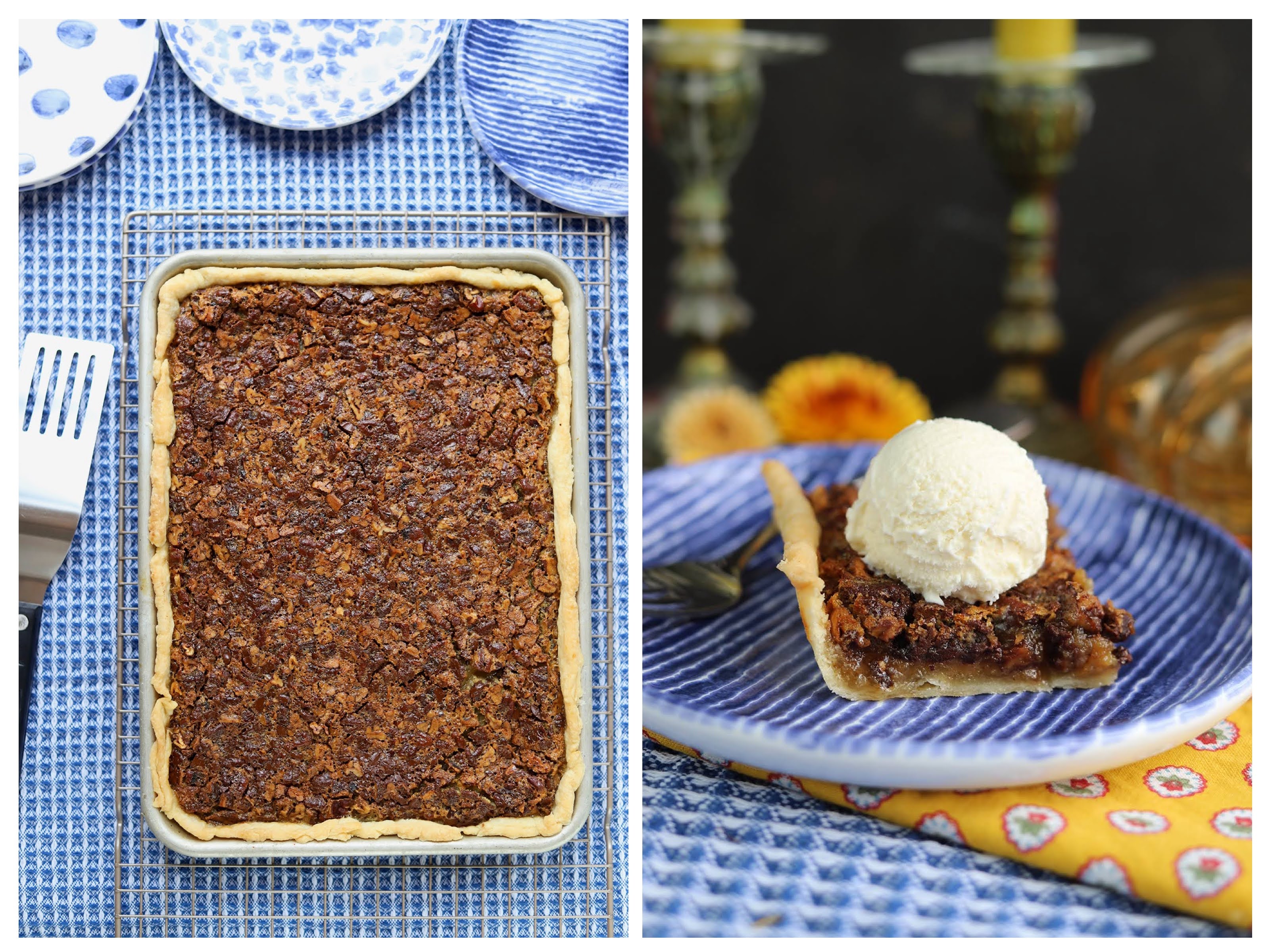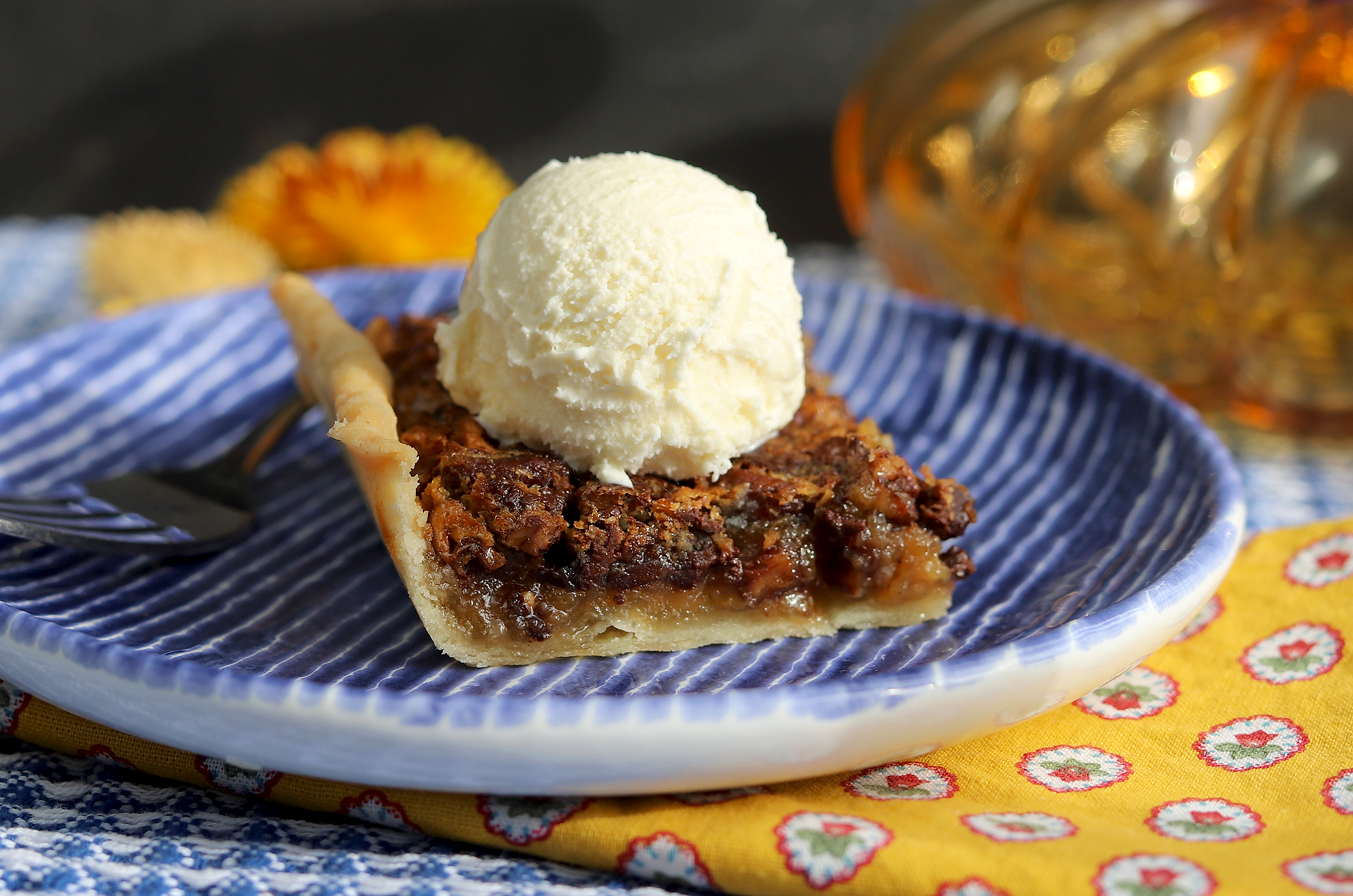Pecan pie is dessert royalty — a staple on holiday tables for well over a century — and the pie I look forward to every year. It has it all going on: a glossy, caramel-like filling and a crackly, crunchy toasted pecan topping all nestled into a buttery, golden crust. Add a scoop of melty vanilla ice cream or a big dollop of whipped cream and I’m officially in holiday dessert heaven.
My only pet peeve with the classic version of this pie is that it’s difficult to cut in small enough pieces to feed a larger gathering. Smaller wedges end up crumbling and collapsing into a heap and, while the overall deliciousness remains, the glamourous layers are lost. Morphing the classic, deep-dish pecan pie into a slab pie baked in a quarter sheet pan makes it way easier to serve up to 12 (or even 16) - and the square or rectangular pieces look great. Think of this version not as a re-invention but more like a simple update to a more practical, user-friendly pie that’s still packed with the same delicious flavors, textures, and taste.

The secret to this flavorful modern pecan pie lies in the balance of the main ingredients. The sweetness is still there but instead of corn syrup, we are using golden cane syrup (see below for more info). Coupled with melted, unsalted butter, the switch leans into a more mellow, rich flavor. Brown sugar adds warmth, and a bit of vanilla (or bourbon) deepens the flavor even more. Topped with a crown of crunchy, toasted pecans, the filling bakes into something that’s neither custard nor caramel, but a perfect in-between — just firm enough to slice yet soft enough to melt on your tongue.
The crust is no afterthought. The all-butter dough mixes up in a stand mixer, and there’s no need to chill it (unless your kitchen is super-hot), so it rolls like a dream and you can use it right away. Typically, pie dough is rolled into a round, but for this pie, we are going with a rectangular shape. Different, I know, but, like anything, with a little practice, you’ll get the hang of it. I’ve given you careful directions – starting with a “brick” shape of dough, rolling between two sheets of parchment paper, and even some tips for patching when necessary (see Kitchen Notes below).
This pie is nostalgic and modern at the same time. It’s a little over-the-top and, honestly, that’s exactly how pecan pie should be. (Note: these tips are for this recipe: Pecan Chocolate Slab Pie.)
Kitchen Notes
Ingredient Check-In: Cane Syrup
In this recipe, I’m suggesting you use golden cane syrup (Lyle’s or Steen’s are common brands). It’s a thick, sweet syrup made by cooking down the juice from sugarcane. Similar to maple syrup processing, the juice is slowly boiled until it thickens and turns dark golden and syrupy. It tastes rich and caramel-y, kind of like a mix between honey and molasses but less bitter and with a smoother finish. Loved for its deep flavor, it’s often drizzled over pancakes and biscuits, and it’s used in pies, bars and other baked goodies in place of corn syrup for a deeper, more complex flavor. That said, you can use corn syrup in this recipe if you cannot find golden cane syrup.
Tips for pie-making success
Making the dough:
- The recipe calls for distilled white vinegar but you can also use the same amount of lemon juice in place of the vinegar.
- This recipe uses a stand mixer fitted with the paddle attachment. Be sure to use a traditional paddle attachment and not one with a rubber side-scraper on the blade. It makes for nice flaky layers of butter and a tender crust.
- Cold ingredients will make an extra flaky crust.
- Butter: Cut the butter into eight even pieces. Pile the butter on a plate and slide into the freezer until ready to use.
- Water: Measure the cold water and add the vinegar. Keep it in the refrigerator until ready to use.
Rolling the dough:
- The dough can be rolled right after mixing as long as it’s not too warm. It can also be wrapped and refrigerated up to two days or frozen for up to three months.
- For smooth and stick-free rolling, have parchment paper, a ramekin of flour for dusting, a rolling pin, and a ruler on-hand.
- If you are new or new-ish to rolling pie dough, set aside a chunk of time and put on your patience hat before you begin. Take your time and move slowly through the process.

Making Repairs:
If your dough isn’t a perfect rectangle – it never is – you can patch it. (See top two photos above.) Cut off some of the dough from an excess area and brush a little water on the edge of the dough that needs repairing. Arrange the trimmed dough so that it’s slightly overlapping and on top of the dampened edge and gently but firmly press to seal. Dust with a little flour and continue to roll.








